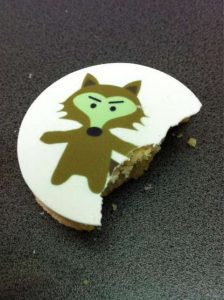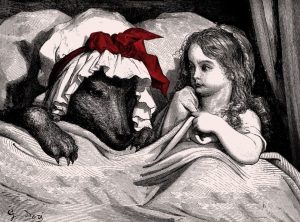We’re excited to announce that we have submitted our special issue of Gothic Studies on ‘Werewolves, Wild Children and Wilderness‘ to Edinburgh University Press for publication in May, 2019. This is the first of two publications that have developed from our now legendary Company of Wolves conference and programme of events. You can see the line up of this special issue, including the abstracts below. Big thanks to our wonderful contributors…..woo hoo… definitely something to howl about!!

Gothic Studies: Werewolves, Wild children and Wilderness
Sam George and Bill Hughes, Intro: ‘Werewolves and Wildness’.
Sue Chaplin, ‘‘Daddy, I’m falling for a Monster’: Women, Sex and Sacrifice in Contemporary Paranormal Romances Featuring Vampires and Werewolves’
Abstract. This article examines a key trope within much contemporary paranormal romance: the absence, or ineffectiveness, of the father. The first part of the essay develops an analysis of this aspect of the genre (in the Twilight Saga especially) through the work of René Girard, Luce Irigaray and Juliet MacCannell. Of particular importance here is the extent to which Twilight and similar narratives stage female self-sacrifice as a pre-condition for the redemption of the hero and the restoration of patriarchal bonds initially compromised by some crisis in the effective functioning of paternal authority. The second section extends this analysis to consider ways in which paranormal romances featuring werewolves and vampires shift away from this conservative and reductivist romance paradigm so as to affirm and contest heteronormative, paternalistic models of masculinity and sexual desire.
Tania Evans, ‘Full Moon Masculinities: Werewolves, Emotional Repression and Violence in Young Adult Fiction’
Abstract. Gothic monsters have recently experienced a period of focused scholarly analysis, although few studies have engaged with the werewolf in terms of its overt alignment with masculinity. Yet the werewolves of young adult fantasy fiction both support and subvert dominant masculine discourses through their complex negotiation with emotional repression and violence. These performative masculine practices are the focus of this article, which analyses how hegemonic masculine ideals are reinforced or rejected in a corpus of young adult fantasy texts, including Cassandra Clare’s young adult series The Mortal Instruments (2007-2014) and Stephenie Meyer’s Twilight Saga (2005-2010). Both texts feature masculine characters whose lycanthropic experiences implicitly comment upon gender norms, which may shape young adult audiences’ understanding of their own and others’ gender identities.
Simon Marsden, ‘One look and you recognize evil’: Lycan Terrorism, Monstrous Otherness and the Banality of Evil in Benjamin Percy’s Red Moon’
Abstract. Benjamin Percy’s novel Red Moon (2013) navigates the problem of the ‘monster’ in the context of post-9/11 representations of Islamist terrorism. Structured around a series of terrorist atrocities carried out by lycan extremists, Percy’s novel employs the werewolf as a figure of monstrous otherness in order to deconstruct the very processes of othering by which the monster is produced culturally and politically. Focusing on the distorted ethical justifications of the terrorists and on the roles of political opportunism and media manipulation in shaping US responses, the narrative allows both lycan terrorists and their political antagonists to emerge as more clown than monster. This article draws upon Hannah Arendt’s account of the banality of evil, and its development by more recent privation theorists, to situate Red Moon within contemporary popular and theoretical discourses of evil and to read the novel as an interrogation of the processes by which our modern political ‘monsters’ are created.
Curtis Runstedler, ‘The Benevolent Medieval Werewolf in William of Palerne’
Abstract. This article argues that the werewolf of the medieval romance displays behaviour comparable with modern studies of the wolf. In the dualistic medieval world of nature versus society, however, this seems inconsistent. How does the medieval werewolf exhibit realistic traits of the wolf? I examine the realistic lupine qualities of the werewolf Alphouns in the Middle English poem William of Palerne to justify my argument. Citing examples from his actions in the wilderness, I argue that Alphouns’s lupine behaviour is comparable to traits such as cognitive mind-mapping and surrogate parental roles, which are found in contemporary studies of wolves in the wild. Recognising the ecology of the (were)wolf of the medieval romance helps us to understand better the werewolf’s role as metaphor and its relationship to humans and society.
Sam George, ‘Wolves in the Wolds: Late Capitalism, the English Eerie, and the Weird Case of ‘Old Stinker’ the Hull Werewolf’
Abstract. British folklore reveals a history of werewolf sightings in places where there were once wolves. This article draws on theories of the weird and the eerie and on the turbulence of England in the era of late capitalism in its analysis of the representation of werewolves in contemporary urban myths. Werewolves are deliberately excluded from Mark Fisher’s notion of the ‘weird’, because they behave in a manner that is entirely expected of them. I contradict this by interrogating the werewolf as spectre wolf, bringing it within the realms of the weird. In examining the Hull Werewolf, I put forward the suggestion that he represents not only our belief in him as a wolf phantom, but our collective guilt at the extinction of an entire indigenous species of wolf. Viewed in this way, he can reawaken the memory of what humans did to wolves, and redeem the Big Bad Wolf of our childhood nightmares
Lisa Nevárez, ‘Playgrounds in the Zombie Apocalypse: The Feral Child’
Abstract. In the episode `The Grove’ (4.14) from AMC’s The Walking Dead, Lizzie and Mika Samuels, sisters and two of the child survivors of the zombie apocalypse, brutally meet their ends. Lizzie, no longer able to distinguish between life and death, kills Mika, and Carol in turn shoots Lizzie, claiming that Lizzie ‘can’t be around people’. These characters call into question the dividing line – if one remains, as established society crumbles – between human and animal, feral and civilised. The texts analysed in this article, AMC’s The Walking Dead and Max Brooks’s novel World War Z, include themes of re-socialising children and forming communities, or packs, in which the children can perhaps become rehabilitated into productive contributors. Viewing children in this light summons up viewer and reader responses to ‘horror’ that are more in keeping with reactions to real-life cases of abused and neglected ‘feral’ children than with the ‘horror’ produced by a zombie-themed text.
Michael Brodski, ‘The Cinematic Representation of the Wild Child: Considering Trouffaut’s L’enfant sauvage (1970)’
Abstract. This article, in examining François Truffaut’s L’enfant sauvage (1970), will consider the feral child Victor (Jean-Pierre Cargol) with regard to the film’s cinematic portrayal as typifying the cultural construction of a child. Following James R. Kincaid, the figure of the child can be seen as a ‘hollow category’, seemingly featureless in its alleged innocence. As a result, it functions as an adult ‘repository of cultural needs or fears’. For this reason, the child, and especially the feral child, can serve as a projection screen for a variety of different and even opposed questions and symbolic constructions. The film effects this subliminally through the portrayal of Victor. This is mainly achieved by constantly shifting between a Romantic discourse of the noble savage and child of nature and the Lockean empiricist view, with the infant’s mind as a tabula rasa condition and the doctor’s, Jean Itard (played by Truffaut himself), consequent need to educate Victor.

